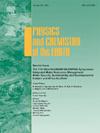Conventional and advanced AI-based models in soil moisture prediction
IF 3
3区 地球科学
Q2 GEOSCIENCES, MULTIDISCIPLINARY
引用次数: 0
Abstract
This study evaluates the predictive accuracy of various computational models for Soil Moisture (SM) content, including (i) hard computing models such as mathematical (MLR) and stochastic techniques (AR, ARMA, ARIMA), and (ii) soft computing AI-based models such as shallow learning (NAR, NARX, MLPNN), advanced deep learning (LSTM, DRNN, CNN), and ensemble learning (Bagging, Boosting, and Adaboost). Using data from a sandy clay loam soil area, the models are developed and then compared for accuracy performance, tendency, and computational expense. Results indicate that hard computing models, particularly the stochastic AR model, do not act properly in predicting daily SM values, so that they could not improve the general predictive accuracy in comparison to the Naïve model based on several evaluation metrics. Shallow machine learning models like NAR and MLPNN perform better than the hard computing models, especially when they get the advantage of exogenous input vector (here, precipitation data). Deep learning models (Pearson Correlation Coefficient: PCC >0.9 and RMSE <1.39), especially the LSTM, exhibited higher accuracy than shallow learning models, however, they were the least favorite category in terms of computational cost. On the other hand, ensemble models show the best performance (PCC >0.92, RMSE >1.28) by combining multiple learners' strengths. In summary, the use of ensemble modeling improved the modeling accuracy of RMSE and PCC up to 6 % and 23 % in comparison to stochastic models, respectively.
基于传统和先进人工智能的土壤湿度预测模型
本研究评估了土壤湿度(SM)含量的各种计算模型的预测准确性,包括(i)硬计算模型,如数学(MLR)和随机技术(AR, ARMA, ARIMA),以及(ii)基于人工智能的软计算模型,如浅学习(NAR, NARX, MLPNN),高级深度学习(LSTM, DRNN, CNN)和集成学习(Bagging, Boosting和Adaboost)。利用砂质粘土壤土地区的数据,建立了模型,并对模型的精度、性能、趋势和计算费用进行了比较。结果表明,硬计算模型,特别是随机AR模型,不能很好地预测每日SM值,因此与基于多个评价指标的Naïve模型相比,它们不能提高总体预测精度。像NAR和MLPNN这样的浅层机器学习模型比硬计算模型表现得更好,特别是当它们获得外生输入向量(这里是降水数据)的优势时。深度学习模型(Pearson相关系数:PCC >;0.9和RMSE <;1.39),特别是LSTM,比浅学习模型表现出更高的准确性,然而,在计算成本方面,它们是最不受欢迎的类别。另一方面,综合多个学习者的优势,集成模型表现出最好的性能(PCC >0.92, RMSE >1.28)。综上所述,与随机模型相比,集成模型的使用将RMSE和PCC的建模精度分别提高了6%和23%。
本文章由计算机程序翻译,如有差异,请以英文原文为准。
求助全文
约1分钟内获得全文
求助全文
来源期刊

Physics and Chemistry of the Earth
地学-地球科学综合
CiteScore
5.40
自引率
2.70%
发文量
176
审稿时长
31.6 weeks
期刊介绍:
Physics and Chemistry of the Earth is an international interdisciplinary journal for the rapid publication of collections of refereed communications in separate thematic issues, either stemming from scientific meetings, or, especially compiled for the occasion. There is no restriction on the length of articles published in the journal. Physics and Chemistry of the Earth incorporates the separate Parts A, B and C which existed until the end of 2001.
Please note: the Editors are unable to consider submissions that are not invited or linked to a thematic issue. Please do not submit unsolicited papers.
The journal covers the following subject areas:
-Solid Earth and Geodesy:
(geology, geochemistry, tectonophysics, seismology, volcanology, palaeomagnetism and rock magnetism, electromagnetism and potential fields, marine and environmental geosciences as well as geodesy).
-Hydrology, Oceans and Atmosphere:
(hydrology and water resources research, engineering and management, oceanography and oceanic chemistry, shelf, sea, lake and river sciences, meteorology and atmospheric sciences incl. chemistry as well as climatology and glaciology).
-Solar-Terrestrial and Planetary Science:
(solar, heliospheric and solar-planetary sciences, geology, geophysics and atmospheric sciences of planets, satellites and small bodies as well as cosmochemistry and exobiology).
 求助内容:
求助内容: 应助结果提醒方式:
应助结果提醒方式:


